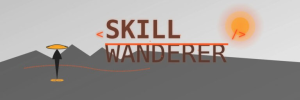Hello everyone,
This week, we're taking a step back to understand the origins of the tools we use every single day. We often take the keyboard for granted, but how did it become the primary way we "talk" to our computers? And what came before the graphical interfaces, icons, and windows we're so familiar with?
To explore these questions, we will be watching a fantastic video from the Crash Course Computer Science series. It provides a dynamic and engaging overview of the journey from early physical switches to the powerful command-line interfaces that are still essential for many professionals today.
Learning Objectives
After watching this video, you will be able to:
- Describe the earliest forms of human-computer interaction (e.g., switches, punch cards, teletypes).
- Explain the history and persistence of the QWERTY keyboard layout.
- Define what a Command Line Interface (CLI) is and its role in the history of computing.
- Recognize the continued relevance of CLIs in the modern world.
- Appreciate the evolution from text-based to graphical user interfaces.
Your Task
- Watch the video: "Keyboards & Command Line Interfaces: Crash Course Computer Science #22".
- Engage Actively: As you watch, use the guiding questions below to focus your attention on the key concepts. You may want to take notes.
Guiding Questions to Consider
Think about these questions as you watch the video:
- How did operators give instructions to the very first computers like the ENIAC, before keyboards existed?
- The video mentions the QWERTY keyboard layout was designed in 1874. Why did it become the standard, and why is it still used today despite potentially more efficient alternatives?
- What is a "teletype" machine, and how did it pave the way for Command Line Interfaces (CLIs)?
- How did early text-based games like Colossal Cave Adventure and Zork change the way people interacted with computers?
- Even with modern graphical interfaces (like Windows or macOS), why do programmers and IT professionals still frequently use the command line?
Enjoy the video, and I look forward to hearing your thoughts!
